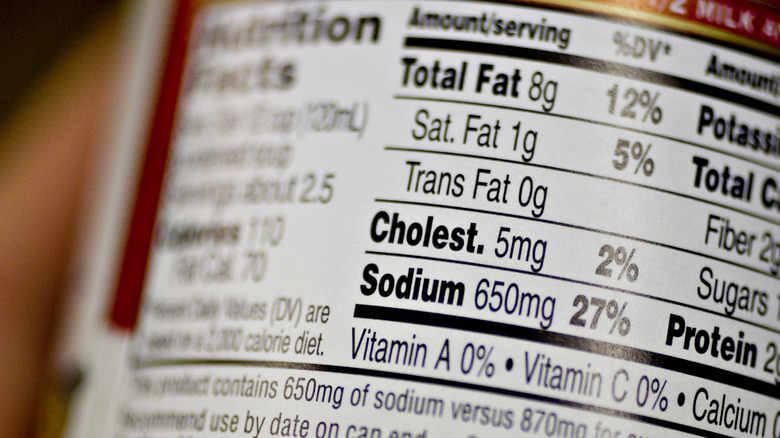The Real Reason Food Labels Don't Always Work
The first nutrition facts labels on food products appeared in 1994, following the passage of the Nutrition Labeling and Education Act (NLEA) into law four years earlier, according to Food Insight. Nutrition labels were added to help consumers become more informed about the foods that they were eating, as well as to "encourage food companies to produce healthier food." Prior to the NLEA, very few foods were required to include nutritional info. In the years since, required labels have detailed facts such as the number of calories and amount of fat, sugar, carbohydrates, and protein that each serving of a food item contains.
And while the familiar nutrition facts label was revamped in 2016 and 2020, it has remained largely the same over the last 30 years, according to Food Dive. However, a recent panel discussion at the Institute of Food Technologists food innovation expo, IFT First in Chicago, seemed to suggest that nutrition labels might need to undergo some big changes if they want to accomplish their original goal of educating the public about the nutritional value of the food they eat.
Only about 5% of people read food labels, one packaging expert said
According to data discussed during a recent IFT First panel titled "What role does labeling play in educating consumers," fewer people read the nutrition labels on the backs of food packages than one might think. In fact, only about 5 to 10% of people actually look at and use the information provided, according to research collected by The Procter & Gamble Co., per Food Business News. "We did research that showed 95% of consumers said it was important to have the information, only 5% actually used it," Robert Lilienfeld, executive director of the Sustainable Packaging Research, Information, and Networking Group, explained during the panel. "It did very little to change how consumers purchased products and what they purchased." It's unclear how recently this research was done.
Lilienfeld suggested to panel attendees that since people do not scrutinize food labels, manufacturers might want to find "other ways to communicate" whatever they want consumers to know about their product. Not everyone in the audience was convinced about the low percentages he shared, however, and Food Business News cited multiple studies showing that much higher percentages of people do, in fact, read labels carefully.
Food manufacturers may be wise to make changes to the clarity of their nutritional info, however. There are common mistakes people make when reading food labels, which may point to shortcomings on producers' part, per a 2018 study shared in the National Library of Medicine. "Although consumers value nutrition when deciding which foods to buy," it says, "nutrition information on food labels is complex and does not always live up to its potential to communicate effectively."

